
Claude Monet: biography, artwork, best paintings of the French Impressionist artist
Oscar-Claude Monet (born November 14, 1840 — died December 5, 1926) was an artist who revolutionized 19th-century painting. He made his mark in history as the founder of French Impressionism and the most consistent representative of this movement. Monet's paintings fascinated his contemporaries with their purity of colors, and his landscapes still appear vivid and shimmering today. How did the master's life unfold, and what helped him usher in a new era in the visual arts?
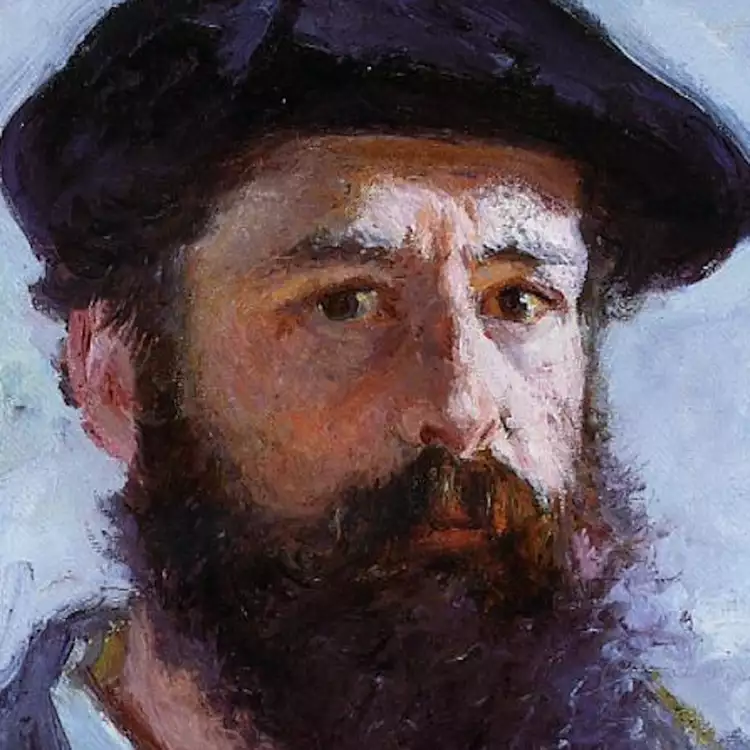 Claude Monet. Self-portrait in a beret, 1886
Claude Monet. Self-portrait in a beret, 1886
 Claude Monet. Pierre-Auguste Renoir. Portrait of Claude Monet, 1875
Claude Monet. Pierre-Auguste Renoir. Portrait of Claude Monet, 1875
Claude Monet's Biography
Oscar-Claude Monet was born on November 14, 1840, in Paris. His father was involved in the sale and delivery of food products and saw his youngest son as a future assistant. Only his mother, who was a singer, supported young Oscar's passion for drawing. At the age of 11, the future artist entered the Le Havre School of the Arts, and five years later, he had a significant encounter with Eugène Boudin. This Normandy painter had a strong influence on Monet and taught him to work en plein air, which was not customary in academic painting.
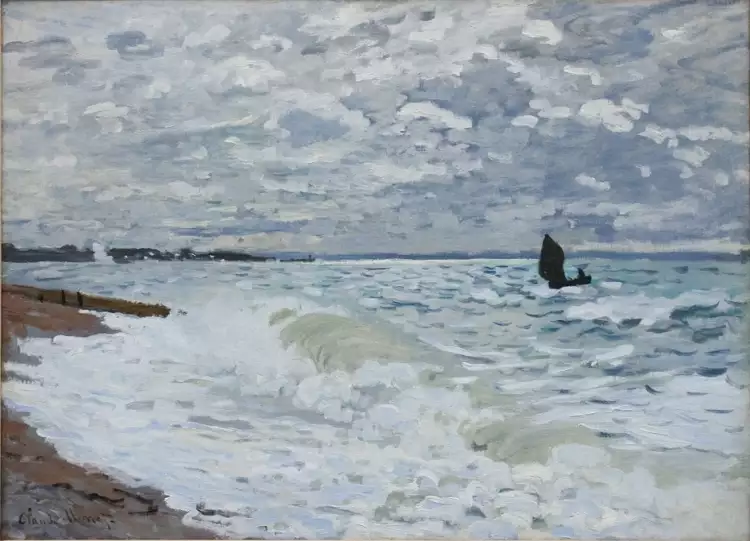 Claude Monet. The sea in Le Havre, 1868
Claude Monet. The sea in Le Havre, 1868
At the age of 16, Claude Monet lost his mother and moved in with his aunt, who provided him with the opportunity to study painting in Paris. The first trip did not last long: in the spring of 1861, the young artist was drafted into the army. His wealthy father could have exempted him from military service but demanded that he give up painting and engage in a "serious business" instead. Without hesitation, Monet refused and found himself in Algeria with the regiment. Later, he wrote that the vibrant colors of Africa laid the foundations for his future creative pursuits.
Instead of the anticipated seven years, Monet's military service lasted only a year. When he fell ill with typhoid fever, his aunt took care of his release from the army and his return to Paris. Here, the artist became acquainted with colleagues and like-minded individuals:
- Camille Pissarro.
- Pierre-Auguste Renoir.
- Édouard Manet.
He also met his muse and future wife, Camille Doncieux, whom he portrayed in many paintings until the late 1870s.
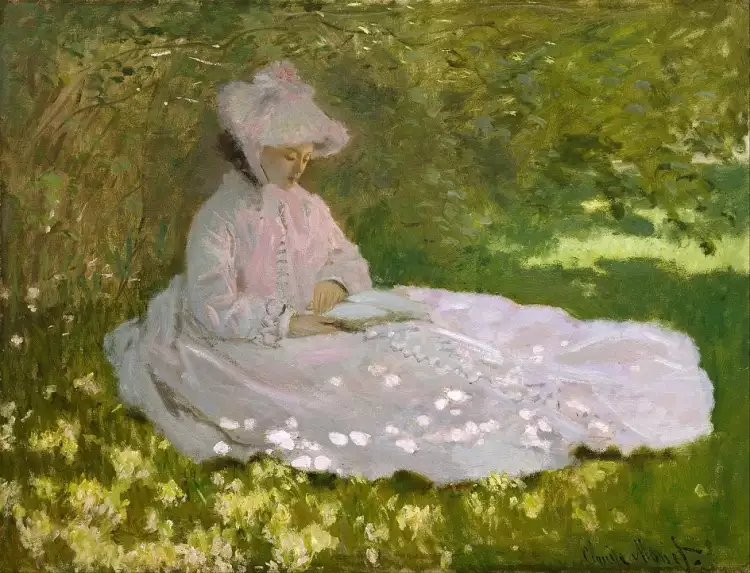 Claude Monet. The spring, 1872
Claude Monet. The spring, 1872
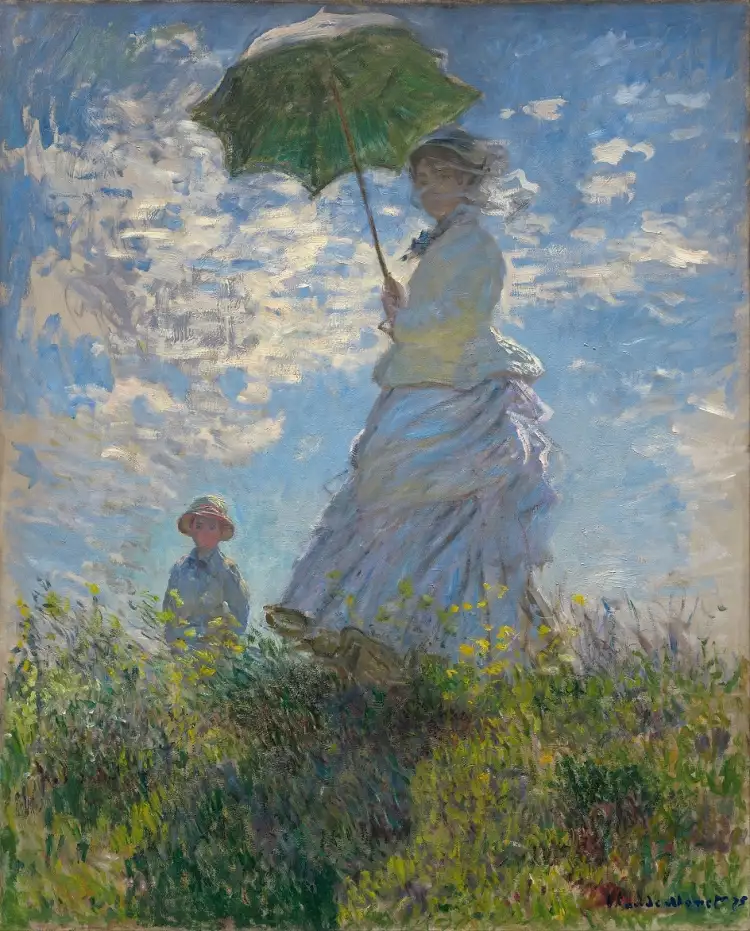 Claude Monet. Woman with a Parasol — Madame Monet and Her Son, 1875
Claude Monet. Woman with a Parasol — Madame Monet and Her Son, 1875
Fame did not come to Claude Monet immediately. He spent many years in extreme poverty and deprivation. The Paris Salon rejected the innovative works of young artists, and sales were almost non-existent. Relatives did not approve of Monet's relationship with Camille Doncieux and did not support the young family.
Everything changed in 1874 when the Salon-rejected artists opened their own exhibition on Boulevard des Capucines, at the renowned photographer Nadar's studio. It was there that Monet's work "Impression, Sunrise" was exhibited for the first time, causing mockery from critics and giving the name to Impressionism (from the French word "impression").
 Claude Monet. Boulevard des Capucines, 1873
Claude Monet. Boulevard des Capucines, 1873
Although the public greeted the first exhibition with coolness, painting in the new style found its admirers. From that moment, Claude Monet gradually became more famous and successful. However, as soon as financial prosperity arrived, personal tragedy struck. Camille fell seriously ill after giving birth to their second son and died in 1879. After her death, the artist practically stopped painting people and focused on pure landscapes, although he remarried a widow with six children.
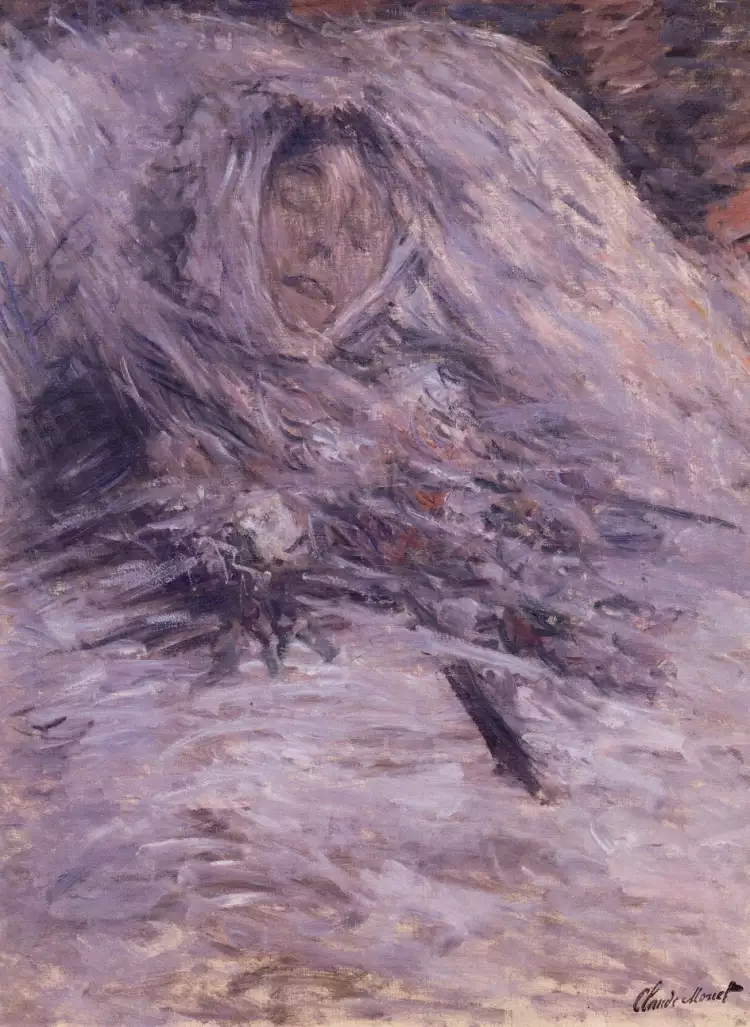 Claude Monet. Camille Monet On Her Deathbed, 1879
Claude Monet. Camille Monet On Her Deathbed, 1879
In the late 1880s, Monet settled in the picturesque village of Giverny in Normandy and, after a few years, was able to buy a house with a garden there, and later acquire additional land for a pond. Hiring five gardeners, he enthusiastically devoted himself to cultivating flowers and water lilies from South America and Egypt. Monet painted these lilies for 30 years, until his death on December 5, 1926. His final works were so focused on color that form almost disappeared. These paintings were just a step away from abstract art.
 Claude Monet. Water Lilies, 1915
Claude Monet. Water Lilies, 1915
 Claude Monet. Water Lilies, 1919
Claude Monet. Water Lilies, 1919
 Claude Monet. Water Lilies, 1915-1926 гг.
Claude Monet. Water Lilies, 1915-1926 гг.
Claude Monet's Most Famous Paintings
The artist, who worked prolifically into old age, left behind over a thousand works of art. There are known to be around 250 paintings of water lilies alone! It is hardly possible to choose a few best works from such a quantity, but there is one painting that has become iconic in the history of art. It is the aforementioned seascape, "Impression, Sunrise", which officially marks the beginning of Impressionism. The painting was created in Le Havre from the window of a hotel.
The famous title was thought up by the artist at the last moment before the exhibition; initially, the artwork was simply called "The Sea". Perhaps, with the new title, the author wanted to emphasize the completeness of the painting, although some critics still considered it unfinished.
 Claude Monet. Impression, Sunrise, 1872
Claude Monet. Impression, Sunrise, 1872
Other famous paintings by Claude Monet include his series on:
- Haystacks (including the most expensive artwork).
- Rouen Cathedral.
- Japanese Bridge.
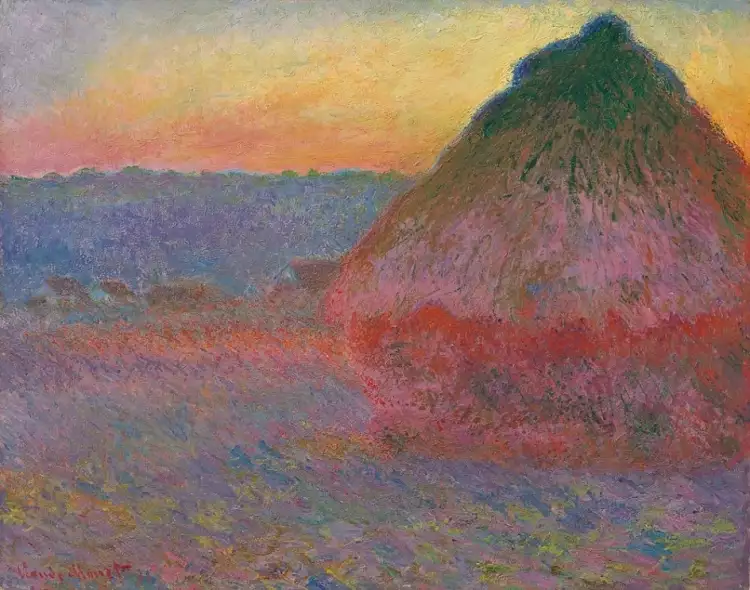 Claude Monet. Grainstacks, 1891
Claude Monet. Grainstacks, 1891
 Claude Monet. Rouen Cathedral. The portal in the sunlight, 1894
Claude Monet. Rouen Cathedral. The portal in the sunlight, 1894
 Claude Monet. Water Lilies and the Japanese Bridge, 1899
Claude Monet. Water Lilies and the Japanese Bridge, 1899
 Claude Monet. The Japanese Bridge, 1922
Claude Monet. The Japanese Bridge, 1922
Fans of Impressionism and landscape painting should pay attention to art auctions regularly held on the Very Important Lot website. Here, you can acquire works of art by Russian and Western masters. We also collaborate directly with promising young artists, whose works are featured in our catalog.
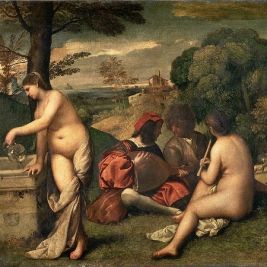 Pastoral is an elegant and carefree genre of art from the Baroque and Rococo periods
Pastoral is an elegant and carefree genre of art from the Baroque and Rococo periods 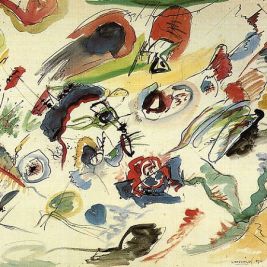 Abstractionism: an inverted painting as a precursor to a new style
Abstractionism: an inverted painting as a precursor to a new style 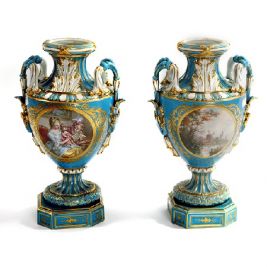 French Porcelain: History of Development and Top Manufactories
French Porcelain: History of Development and Top Manufactories 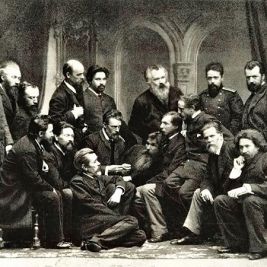 Peredvizhniki: Revolution in Russian Art of the 19th century
Peredvizhniki: Revolution in Russian Art of the 19th century  Phaleristics is a young scientific discipline about antique awards
Phaleristics is a young scientific discipline about antique awards  Edward Munch—the creator of nightmares and the singer of anxiety
Edward Munch—the creator of nightmares and the singer of anxiety 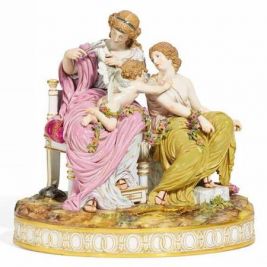 Meissen Porcelain: The History of the Manufactory
Meissen Porcelain: The History of the Manufactory 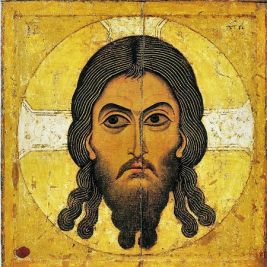 The Art of Ancient Russia is a unique blend of pagan traditions of Eastern Slavs and Byzantine influence on the local culture
The Art of Ancient Russia is a unique blend of pagan traditions of Eastern Slavs and Byzantine influence on the local culture  Bas-relief - a type of sculpture with an ancient and rich history
Bas-relief - a type of sculpture with an ancient and rich history 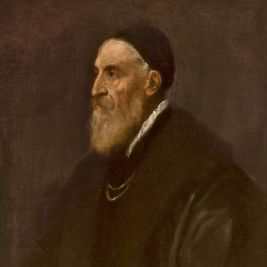 Titian Vecellio was the greatest Venetian genius of the Renaissance era
Titian Vecellio was the greatest Venetian genius of the Renaissance era